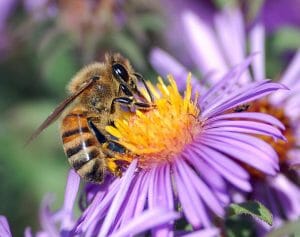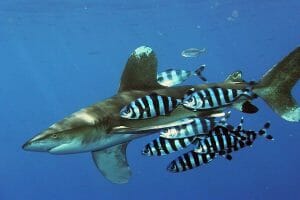Commensalism and mutualism both describe a symbiotic relationship between two organisms. The main difference lies in whether one or both of the organisms benefits from the relationship. Mutualism is further subdivided into two categories that define how dependent the organisms are on each other for survival.
Mutualism
In mutualistic relationships, individuals of different species both benefit from their interaction. This is also called interspecies reciprocal altruism. These relationships can be obligate for both species, meaning they can’t live without each other, or facultative for both species, meaning they can live without each other.
Obligate Mutualism
An example of obligate mutualism is the relationship between termites and the protozoans that live in their digestive system. Termites cannot digest the cellulose they take in from eating wood to obtain the nutrients, but the protozoans in their gut can. In turn, the protozoans who cannot chew up wood, receive a reliable food supply from the termites.
Facultative Mutualism
Facultative mutualism exists between birds and the plants that produce the fruit they eat. The birds benefit from eating the fruit but they also have other food sources so they are not dependent on it. Likewise, the plant that bears the fruit benefits from the bird scattering its seeds in their droppings, but this seed dispersion also happens in other ways and with other species.
Commensalism
In commensalism, one of the organisms benefits in some way while the other is unaffected. An example of a commensal relationship is when an organism uses another organism (or part of a dead organism) for transportation or housing without having any effect on it. For example, hermit crabs use the abandoned shells of other creatures like sea snails to protect themselves. Other commensal relationships exist in nature such as when birds build a nest in a tree. The birds benefit from having a home, protection and a place to raise their young, but the tree is unaffected.

The image above shows the mutualistic relationship between bees and flowers. The bees benefit from the pollen and nectar they gather from the flowers and the flowers benefit by the bees transporting their pollen and pollinating other flowers.

The image above shows commensalism between some shark species and pilot fish. Pilot fish will feed on the leftovers in the water after the shark makes a kill, while the shark remains unaffected by this behavior.
References
- OpenStax, Biology. OpenStax. May 20, 2013. http://cnx.org/content/col11448/latest/
- Symbiosis. (n.d.). In Wikipedia. Retrieved September 19, 2017 from https://en.wikipedia.org/wiki/Symbiosis
